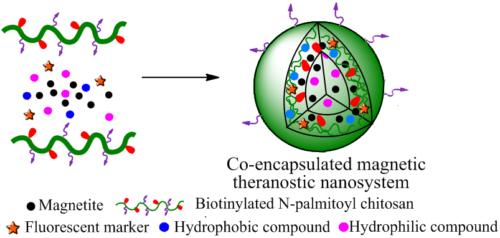
Cancer is the leading cause of worldwide death for centuries, accounting millions of death annually. Breast cancer is the most frequent cancer in women.
Although promising, current therapies including surgery, chemotherapy and radiotherapy are still limited due to:
- lack of selectivity
- multidrug resistance and
- severe toxic side effects
These issues can be addressed by theranostics which has currently emerged as a single smart nanosystem able to assure both diagnosis and therapy. Moreover, combined chemotherapy, namely co-administration of two or more pharmaceuticals using a multifunctional nanoplatform, has been proposed as a viable solution to overcome the multidrug resistance. In this context, the main objective of the project is to develop a novel and cost effective way to design smart co-delivery platforms for theranostic applications in breast cancer, by combining the following strategies as key points:
- Co-encapsulation of two chemotherapeutic agents in order to obtain a synergistic effect, without compromising the functionality of each other;
- The use of a biofunctionalized polymer that combine biotin as a breast tumor targeting approach with amphiphilic chitosan advantanges;
- Comprehensive biological investigations towards understanding and control of nanoparticulate systems-cell interactions in animal tumour models;
- Incorporation of a fluorescent marker that enables cell specific imaging in addition to the tissue level imaging using MRI.
Proposed nanostructures will combine into a single platform multiple functionalities, namely: magnetic material-for magnetic guiding and imaging (MRI), 2 therapeutic moieties with synergetic effects, a targeting agent and a fluorescent marker. The key parameters in the behavior of co-encapsulated functionalized nanosystems are related to biological responses to surface chemistry, size, and ability to retain and release chemotherapeutic drugs and to provide information at the cellular level.